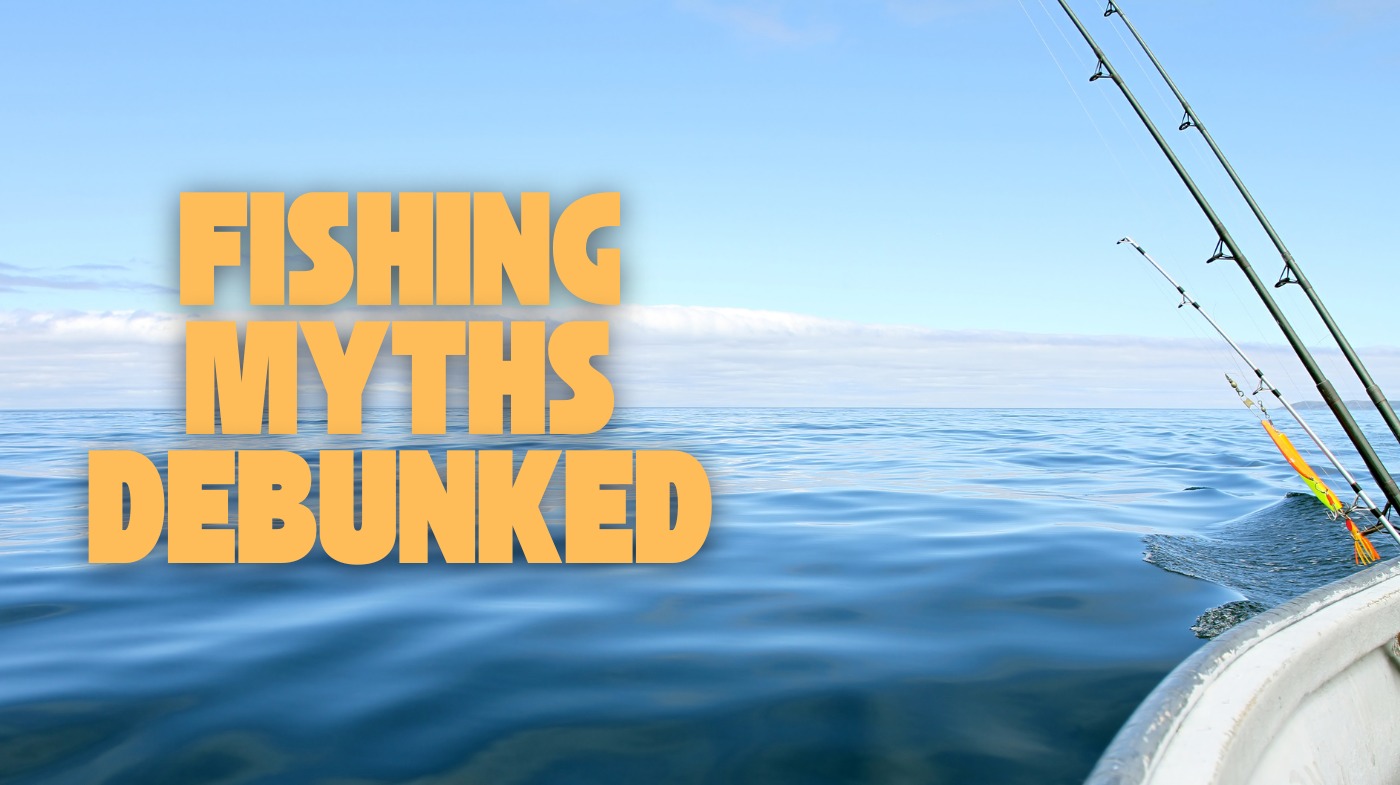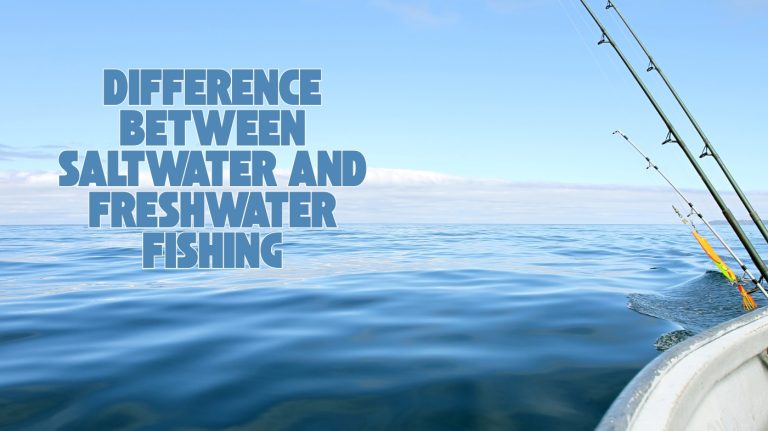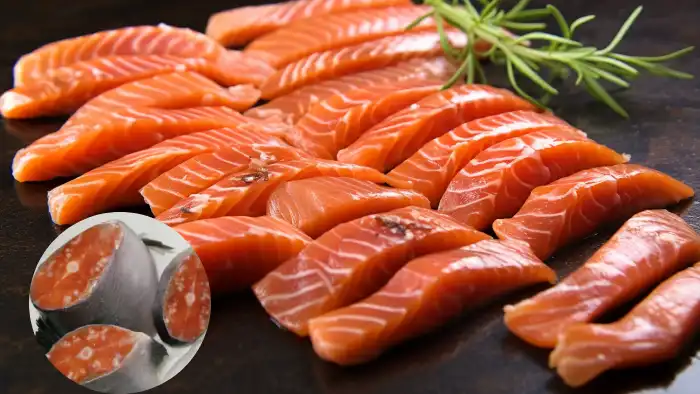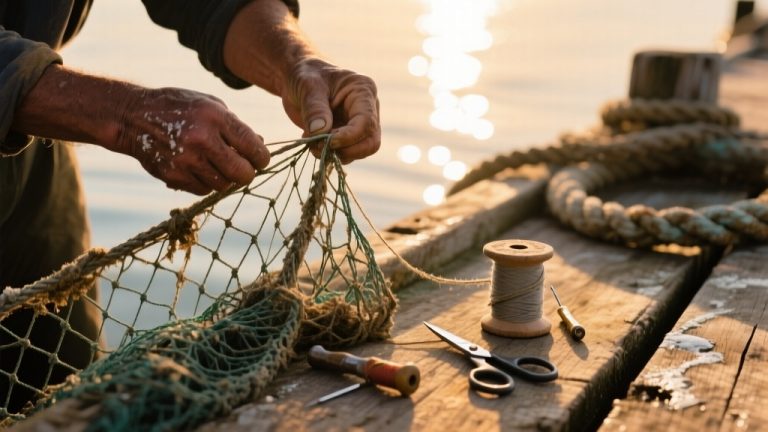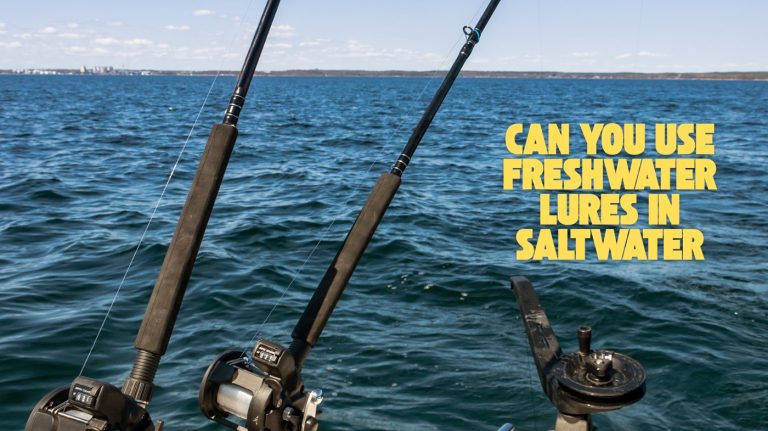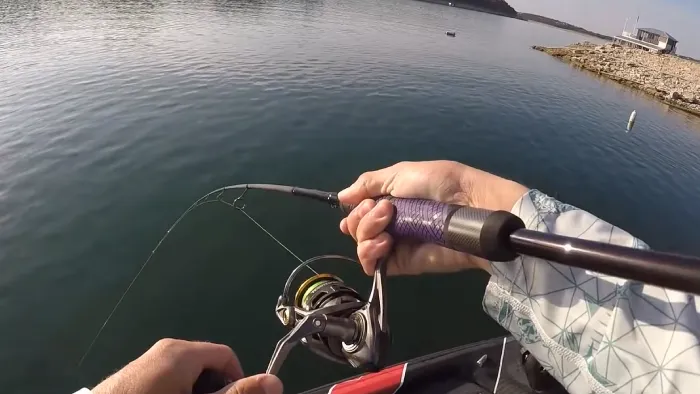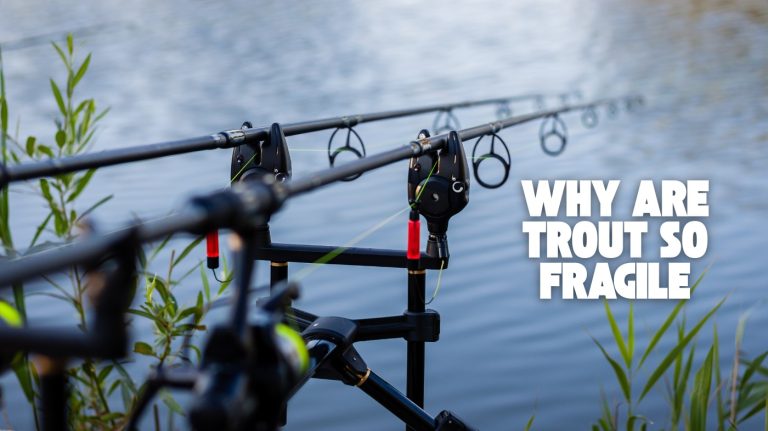Fishing Myths Debunked: Secrets to Catching More Fish
You might think live bait guarantees bigger fish, but it mostly increases total catches across all sizes. Lure color truly matters, with darker hues standing out better in low light or murky water. Bass slow down in winter, so slow, baitfish-like lures work best.
Rain can boost activity unless it muddies the water. Bigger bait often draws larger fish, yet habitat and timing play bigger roles than you expect. Learn how fish behavior and environment reshape common fishing assumptions.
Key Takeaways
- Seasonal fish behavior varies within seasons; fixed patterns and oversimplifications often mislead anglers about optimal fishing times and methods.
- Live bait increases overall catch rates but does not guarantee bigger fish; bait size alone doesn’t ensure larger catches.
- Lure color effectiveness depends on water clarity, depth, and fish vision, with dark colors like black and blue often improving visibility.
- Rain and barometric pressure drops can boost fish activity and feeding, but heavy rain may reduce water clarity and visibility.
- Larger bait and hooks target bigger fish species, while smaller bait and hooks typically catch more but smaller fish.
Live Bait Is Not Essential for Catching Big Fish
Although live bait often increases the total number of fish caught, it doesn’t necessarily improve your chances of landing bigger fish specifically. Research shows live bait generally boosts total catch rates, especially for scent-reliant species, but it raises both small and large fish captures proportionally.
The density of large fish in the habitat directly impacts catch potential, making it crucial to consider fish population density when aiming for trophy catches.
The idea that bigger bait guarantees bigger fish is a statistical misconception; size preference varies by species, habitat, and seasonal prey availability. Data on big fish response to live bait versus artificial lures remain limited and context-dependent. Additionally, proper cleaning techniques for fishing gear, such as felt shoes, can influence fishing effectiveness and environmental impact.
To effectively target large fish, you need to focus on species-specific behaviors and environmental conditions rather than relying solely on live bait. Using live bait increases catch volume but doesn’t inherently favor bigger fish, making knowledge and strategy more critical than bait choice alone.
The True Impact of Lure Color on Fishing Success
When you consider lure color, you’ll find it markedly influences catch rates, especially for species like largemouth bass. Studies reveal statistically significant variations in catch success linked to lure colors such as transparent, purple, and blue.
These differences arise from fish attraction to specific wavelengths and contrast patterns rather than color alone. Dark colors like black and dark blue are highly effective across various conditions because they improve lure visibility and mimic prey.
Environmental factors like water clarity and depth further modulate color effectiveness. Bright colors excel in clear water, while darker hues like black and blue maintain visibility in murkier conditions. Selecting the appropriate color can also reduce the chance of fish spooking and increase strike rates.
Fish vision fluctuates daily and seasonally, affecting color perception and strike behavior.
No single color guarantees success universally. Instead, you should adapt lure choices based on species, habitat, and conditions. Combining color selection with retrieval technique enhances your fishing efficiency markedly.
Bass Activity During Winter Months
You’ll notice that bass slow their movement considerably during winter as cold temperatures reduce their metabolism. This change pushes them toward deeper, thermally stable waters. Large black bass tend to be less active and focus on hunting large prey due to their slowed metabolism.
Understanding these shifts helps you adjust your fishing techniques to target bass in their preferred winter habitats like rocky drop-offs and underwater structures. Recognizing how temperature drives bass behavior lets you optimize lure presentation and timing for better success in cold conditions.
Additionally, bass often seek slack water zones during low activity periods to conserve energy and improve feeding efficiency.
Bass Movement in Cold
How do bass adjust their movement during the cold winter months? You’ll find that bass reduce activity noticeably, seeking deeper, warmer microhabitats where temperature declines slowly. They often migrate to still water zones in rivers, conserving energy by avoiding fast currents. Using basic fishing techniques suited for low activity periods can increase your chances of success.
Many bass limit their movements to small, defined home ranges, staying under cover or structural edges to ambush prey efficiently while minimizing energy use. Some individuals shift to new winter territories within reservoirs, but overall, movement is minimal. Bass physiology & activity during colder months leads to prolonged fasting and slowed chemical reactions.
Cold temperatures slow bass metabolism, so they feed less frequently and with lower intensity, balancing energy spent on digestion against energy gained. Smaller bass may enter near-suspended animation, drastically reducing movement to survive. These behavioral adjustments optimize survival during prolonged cold periods.
Winter Fishing Techniques
Although bass reduce activity during winter months, anglers can still provoke strikes by adapting their fishing techniques to match bass behavior and environmental conditions. You should employ slow presentations, retrieving lures at glacial speeds to mimic lethargic prey movements.
Fish primarily target baitfish during winter, so focusing on lures that imitate dying or slow-moving baitfish increases success in deeper water target baitfish. Organizing your essential fishing tools in a compartmentalized tackle box can enhance efficiency during cold conditions.
Soft plastic jerkbaits and jigs excel due to their subtle, slow action. Using low gear ratio reels (5.1:1 to 5.4:1) enhances sensitivity, allowing precise control over lure speed and feel. Monofilament line is preferable for its slight stretch, improving hookup efficiency in cold bass with firm mouths.
Consider spinnerbaits with double Colorado or big willow leaf blades in 40–55°F water, especially during cloudy or rainy conditions that increase bass aggression.
Power fishing techniques with burner reels can trigger feeding instincts despite cold, but slow finesse presentations remain fundamental for winter success. Adjusting the rig’s depth and bait presentation by setting the bobber and sinkers appropriately can optimize results in varying depths.
Temperature Impact on Bass
Adapting winter fishing techniques relies heavily on understanding how water temperature influences bass activity. As cold-blooded creatures, bass metabolism slows with decreasing temperature, leading to reduced feeding frequency and movement.
This slowdown means bass feel fuller longer due to slower food processing, which reduces their feeding drive. Using polarized lenses can help anglers spot bass in deeper, clearer water during colder months.
You’ll find bass seeking deeper, stable-temperature zones to conserve energy and feed selectively.
When targeting winter bass, consider these key points:
- Below 50°F, bass become sluggish, favoring deep-water ambush spots over active pursuit.
- Use slow lure presentations that mimic lethargic prey, as bass strike less aggressively.
- Midday offers the best bite window due to slight water warming and increased activity.
Fishing Effectiveness in Rainy Conditions
When rainfall occurs, fish activity often increases due to factors like surface disturbance and elevated nutrient levels, which make fish less cautious and more inclined to bite. You’ll notice light to moderate rain breaks the water surface, increasing oxygen and nutrient inflow that invigorates fish, especially bass.
Measuring water temperature can help identify the best fishing spots during these conditions, as fish often migrate to areas with optimal temperature ranges. However, heavy rain can muddy waters, reducing visibility and scent trails, complicating bait detection.
Barometric pressure drops preceding rain trigger aggressive feeding, creating a narrow window for ideal fishing. Fish also tend to feed aggressively when the barometer is dropping, which is a key factor anglers use to time their fishing trips for maximum success, demonstrating the importance of monitoring barometric pressure changes.
The Relationship Between Bait Size and Fish Size
Rainfall and barometric changes influence fish feeding behavior, but the size of bait you choose plays a significant role in determining which fish you catch. Larger bait tends to attract and catch bigger fish like cod, wolffish, and tusk, especially those exceeding 45-57 cm.
This is because larger fish naturally prefer prey that matches their size and are less cautious attacking large bait. Research shows that larger hooks and bait increase catch efficiency for bigger fish, shifting exploitation toward larger individuals. Using the appropriate tippet strength can further enhance your ability to handle larger fish effectively.
When selecting bait size, consider these points:
- Larger bait paired with larger hooks shifts catch composition toward bigger predatory fish.
- Smaller bait and hooks generally yield more but smaller fish.
- Matching bait size to hook size optimizes targeting specific fish sizes and species.
The Real Factors Behind Offshore Fishing Success
You’ll find that offshore fishing success hinges on precise timing and location, where environmental factors like ocean currents and underwater structures play vital roles. Selecting the right equipment, such as reels with specialized drag systems, can enhance your ability to handle challenging conditions.
Upwellings concentrate baitfish by bringing nutrient-rich water to the surface, attracting larger predators. Downwellings disperse food sources and reduce fish presence.
Understanding these dynamic conditions helps you target areas with active feeding behavior, increasing your catch odds. Satellite altimetry is an essential tool that provides a broad view of sea surface height variations, helping anglers identify key fishing zones near upwellings and downwellings altimetry data.
Timing and Location
Although timing and location are often cited as key to offshore fishing success, their impact is nuanced and intertwined with biological and oceanographic factors.
You need to contemplate that:
- Altimetry data helps you pinpoint upwelling zones where nutrient-rich waters attract pelagic fish, making these spots more productive than downwelling areas.
- Sea surface temperature charts reveal thermal boundaries; aligning these with species-specific temperature preferences enhances your targeting accuracy. Fish activity levels increase when water temperatures align with their preferred zones, making temperature data critical for predicting fish presence.
- Timing variables like tides and total fishing hours show weak correlations with catch success, emphasizing fish behavior over simple timing constructs.
Environmental Influences
When you consider offshore fishing success, environmental influences often prove more decisive than timing or location alone. Water temperature affects fish metabolism and distribution, while light intensity shapes feeding and migration behaviors.
Ocean currents influence nutrient flow and fish aggregation, and habitat quality determines shelter and food availability. These factors interact complexly, guiding where and when fish are accessible.
Moreover, well-managed fisheries can maintain healthy fish populations, showing that sustainable management is crucial for long-term fishing success. Choosing the right fishing gear, such as reels engineered for water resistance, can also enhance your ability to fish effectively in challenging offshore environments.
| Factor | Influence | Impact on Fishing |
|---|---|---|
| Water Temperature | Alters metabolism and migration | Changes fish presence and stress |
| Light Intensity | Affects feeding and predation | Modifies catch rates |
| Ocean Currents | Controls nutrient flow and dispersal | Influences fish aggregation |
| Habitat Quality | Provides shelter and feeding grounds | Supports fish abundance |
How Fish Respond to Lure Profiles and Techniques?
Since fish rely heavily on sensory input and hormonal states to interact with lures, understanding their responses to different lure profiles and techniques is essential for effective angling.
Fish with lower cortisol levels show greater willingness to strike, highlighting stress as a key hormonal driver. Studies show that fish exhibiting high cortisol responses after stress are less likely to strike at a lure.
Lower cortisol levels in fish increase their likelihood to strike, emphasizing stress’s role in feeding behavior.
Their sensory systems detect motion, color, noise, and scent, influencing lure success.
You should consider:
- Matching lure movement and appearance to natural prey, as fish differentiate between artificial and live bait.
- Exploiting behavioral traits like boldness, which increase vulnerability, particularly during activities like nest guarding.
- Using lure sounds and vibrations tailored to prey cues, since sound frequency and decibel levels affect attraction.
Common Misconceptions About Seasonal Fishing Patterns
Understanding how fish respond to lure profiles and techniques naturally leads to examining how seasonal patterns influence fish behavior and fishing success. You might assume the best fishing seasons follow rigid patterns, but local ecological variations and species-specific behaviors often defy these expectations.
For example, commercial landings for species like Yellowtail scad and Hilsa shad sometimes differ markedly from local fishers’ observations, influenced by gear types and targeted life stages. Seasonal fish movements correlate with temperature and daylight changes, but intra-season variability and climate shifts add complexity.
Misconceptions arise when anglers generalize seasonal trends without considering site-specific conditions or species biology. By recognizing these nuances, you can better align your fishing strategies with actual seasonal dynamics rather than relying on oversimplified assumptions.
Frequently Asked Questions
What Is the Best Fishing Knot for Beginners?
The best fishing knot for beginners is the Improved Clinch Knot. You’ll find it straightforward to learn and versatile for monofilament and fluorocarbon lines up to 25-pound test.
It reliably secures lures, swivels, and split rings, making it ideal for freshwater fishing. Its simplicity reduces tying errors, and plenty of tutorials support your learning.
Once you’re comfortable, you can explore stronger knots like the Palomar or Uni Knot for heavier lines.
How Does Water Salinity Affect Fish Behavior?
When it comes to fish behavior, salinity can really shake things up. You’ll notice freshwater fish like Iberian barbel reduce their routine swimming by nearly 20% in higher salinity.
Their shoal cohesion weakens, and boldness or escape attempts increase markedly. However, aggression doesn’t spike much over time.
These behavioral shifts result from the fish’s energy-intensive efforts to maintain osmotic balance under salt stress, altering their ecological fitness and survival strategies.
Can Fish Detect Ultraviolet Light From Lures?
Yes, fish can detect ultraviolet (UV) light from lures, especially species with UV-sensitive photoreceptors like anemonefish and goldfish.
When you use lures emitting or reflecting UV light, you enhance their visibility to these fish by increasing contrast and mimicking natural prey signals.
This ability varies by species, environment, and life stage, so incorporating UV-reflective materials in lures can improve your chances of attracting certain fish effectively.
What Role Does Moon Phase Play in Freshwater Fishing?
You might think the moon controls every bite you get, but its role in freshwater fishing is subtle and species-specific.
New moon phases often boost feeding in some fish like Nile tilapia, while full moons can make others, such as muskie, slightly more active.
However, the scientific consensus is that lunar effects vary widely, influenced by changes in light, prey behavior, and water movement.
How Do Fishing Regulations Impact Catch Limits?
Fishing regulations directly establish catch limits to prevent overfishing and sustain fish populations. When you follow these rules, such as total allowable catches and daily harvest limits, they control how much you can catch, promoting biomass recovery and reducing mortality rates.
Quota systems and size restrictions further enhance stock health. These regulations depend on scientific assessments, and compliance guarantees that fishing remains sustainable while balancing economic and social factors.
Turn Fishing Myths into Winning Strategies
You might think fishing success hinges on live bait or perfect conditions, but the reality is more nuanced. Like a puzzle with shifting pieces, factors such as lure color, bait size, and seasonal patterns interact in complex ways.
By understanding how fish behavior and environmental elements truly influence results, you’ll cast with greater precision and confidence—turning myths into clear, evidence-based strategies that improve your catch every time you’re on the water.

